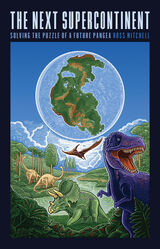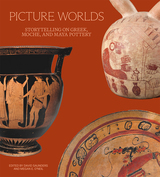
This book tells the exciting story of the ice ages—what they were like, why they occurred, and when the next one is due. The solution to the ice age mystery originated when the National Science Foundation organized the CLIMAP project to study changes in the earth’s climate over the past 700,000 years. One of the goals was to produce a map of the earth during the last ice age. Scientists examined cores of sediment from the Indian Ocean bed and deciphered a continuous history for the past 500,000 years. Their work ultimately confirmed the theory that the earth’s irregular orbital motions account for the bizarre climatic changes which bring on ice ages.
This is a tale of scientific discovery and the colorful people who participated: Louis Agassiz, the young Swiss naturalist whose geological studies first convinced scientists that the earth has recently passed through an ice age; the Reverend William Buckland, an eccentric but respected Oxford professor who fought so hard against the ice-age theory before accepting it; James Croll, a Scots mechanic who educated himself as a scientist and first formulated the astronomic theory of ice ages; Milutin Milankovitch, the Serbian mathematician who gave the astronomic theory its firm quantitative foundation; and the many other astronomers, geochemists, geologists, paleontologists, and geophysicists who have been engaged for nearly a century and a half in the pressing search for a solution to the ice-age mystery.

When it was discovered that a famous star of the day had probably killed Taylor, a massive cover-up began—from the removal of crucial evidence to the naming of innocent people as killers—which has continued until now to protect the truth. Murder in Hollywood goes beyond the killing to unearth unknown details about the life of Taylor before his arrival in Hollywood, as well as the stories and histories buried by the crooked authorities and criminals involved the case. The author’s exclusive interviews with the culpable star, his unique possession of long-vanished police records, and the support of the present-day Los Angeles county coroner—who examined the evidence as if the murder had taken place now—have ensured a hair-raising thriller.
Charles Higham successfully presents the most plausible and convincing solution yet to the mystery. In the process he paints a vivid portrait of Hollywood in the 1920s—from its major stars to its bisexual subculture. The result is a compelling answer to a long-standing mystery and a fascinating study of a place, and an industry that, as today, let people reinvent themselves. Murder in Hollywood is more extraordinary than any crime of fiction and more exciting than any action adventure movie.

An internationally recognized scientist shows that Earth’s separate continents, once together in Pangea, are again on a collision course.
You’ve heard of Pangea, the single landmass that broke apart some 175 million years ago to give us our current continents, but what about its predecessors, Rodinia or Columbia? These “supercontinents” from Earth’s past provide evidence that land repeatedly joins and separates. While scientists debate what that next supercontinent will look like—and what to name it—they all agree: one is coming.
In this engaging work, geophysicist Ross Mitchell invites readers to remote (and sometimes treacherous) lands for evidence of past supercontinents, delves into the phenomena that will birth the next, and presents the case for the future supercontinent of Amasia, defined by the merging of North America and Asia. Introducing readers to plate tectonic theory through fieldwork adventures and accessible scientific descriptions, Mitchell considers flows deep in the Earth’s mantle to explain Amasia’s future formation and shows how this developing theory can illuminate other planetary mysteries. He then poses the inevitable question: how can humanity survive the intervening 200 million years necessary to see Amasia?
An expert on the supercontinent cycle, Mitchell offers readers a front-row seat to a slow-motion mystery and an ongoing scientific debate.
READERS
Browse our collection.
PUBLISHERS
See BiblioVault's publisher services.
STUDENT SERVICES
Files for college accessibility offices.
UChicago Accessibility Resources
home | accessibility | search | about | contact us
BiblioVault ® 2001 - 2024
The University of Chicago Press









